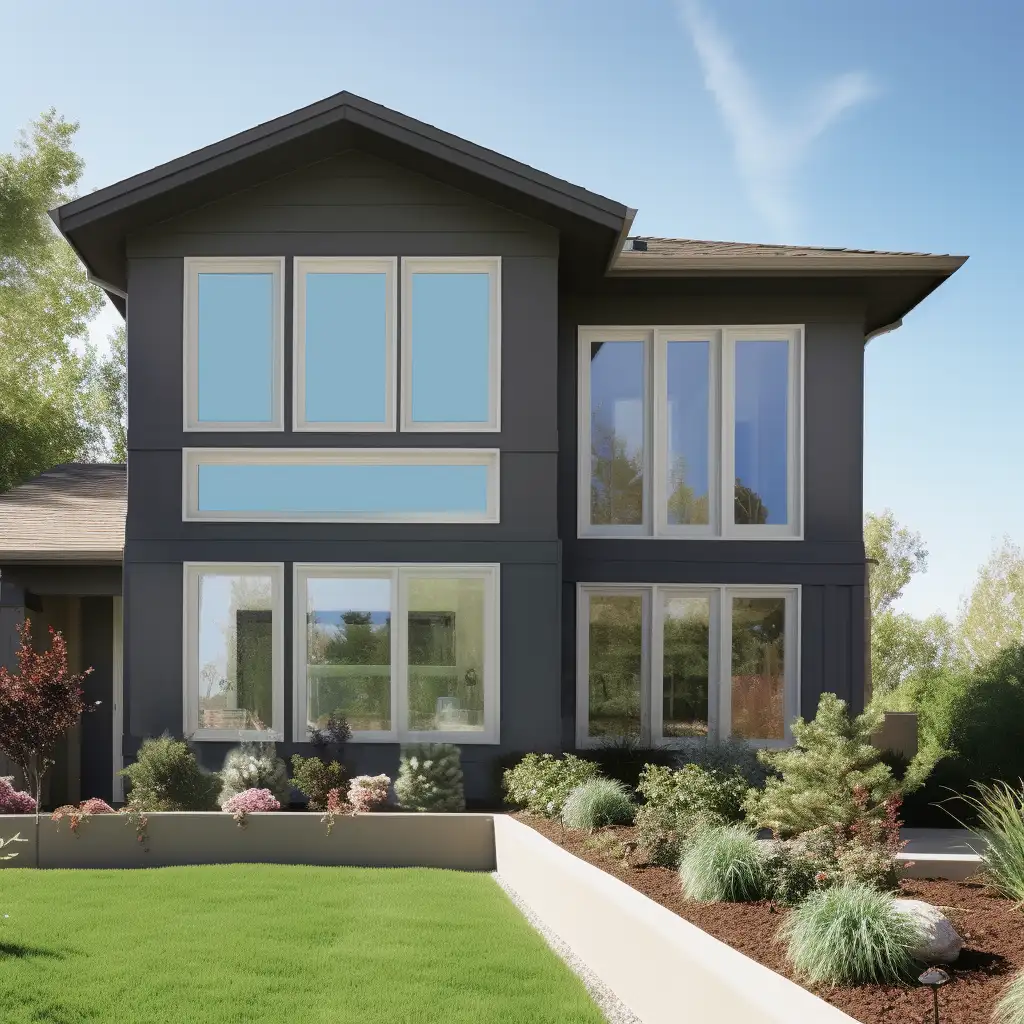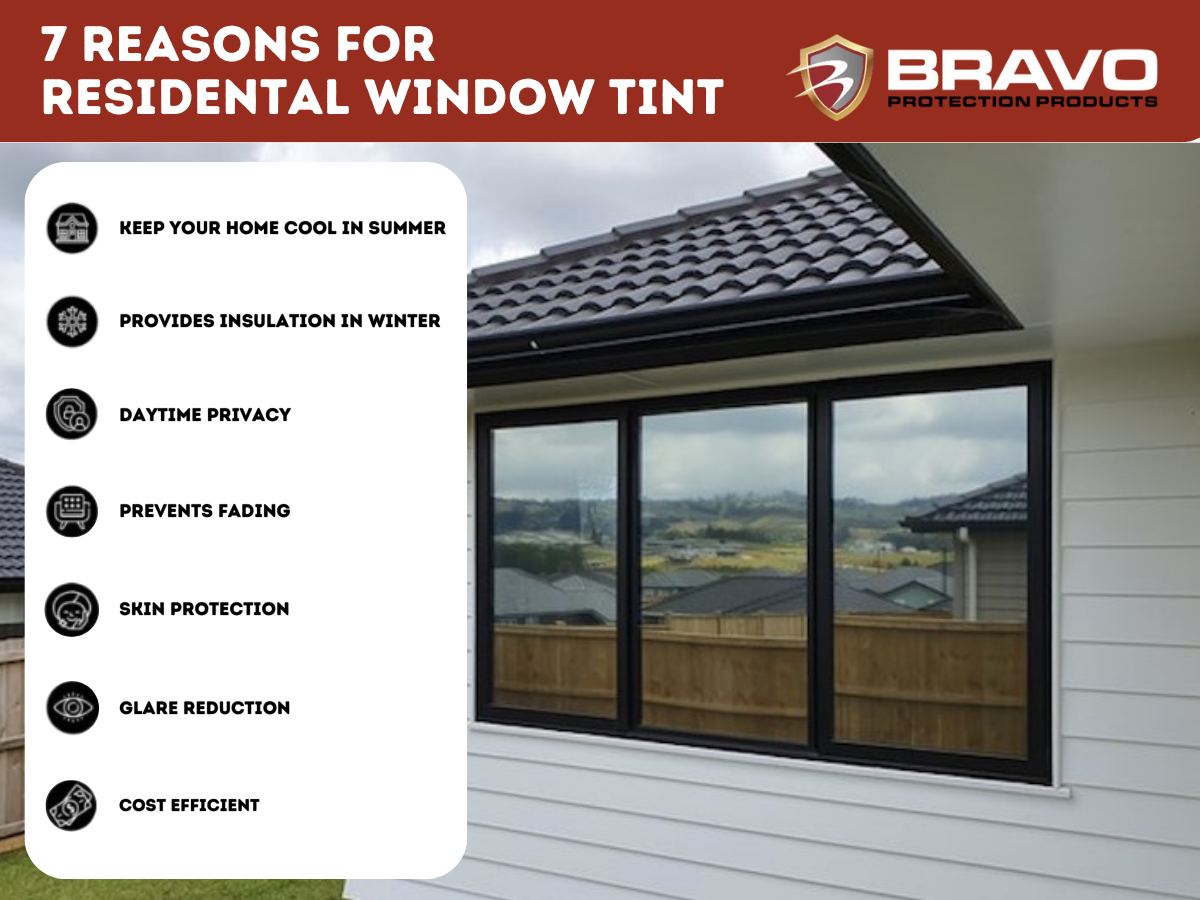Just How Residential Window Tinting Improves Your Home's Energy Efficiency
Residential home window tinting offers an engaging solution for home owners seeking to boost power performance within their home. By using specialized films to home windows, it efficiently reduces warm transfer, therefore maintaining indoor temperatures and reducing the demand for excessive home heating or cooling. This not only curtails power consumption however additionally offers a much more comfortable atmosphere by mitigating glare. Comprehending the subtleties of how tinting works and choosing the appropriate type for your home can be crucial. Curiously, what elements should one think about prior to making this financial investment?
Recognizing Home Window Tinting
Recognizing home window tinting is necessary for homeowners seeking to enhance both comfort and power efficiency in their home. Residential Window Tint. Window tinting includes the application of a thin film to the interior or exterior surface of glass windows. This movie can significantly regulate the quantity of sunlight and warmth that gets in a home, hence affecting indoor climate conditions
There are numerous types of window tinting movies available, each with distinctive properties. The effectiveness of home window tinting is typically measured by its Visible Light Transmission (VLT) percent, which shows just how much light can pass with the film.
Advantages of Power Effectiveness
Home window tinting not just boosts aesthetics yet also plays a substantial function in enhancing power effectiveness within residential areas. By reducing warmth transfer through home windows, colored films produce a more steady interior climate, which can cause significant reductions in power consumption for heating & cooling. This energy effectiveness equates into lower energy costs, offering homeowners with substantial long-term financial savings.

Additionally, window tinting boosts the comfort of living spaces. By minimizing glow and obstructing harmful UV rays, tinted windows develop an even more pleasurable atmosphere, which can bring about boosted well-being for passengers. The protection against UV rays likewise assists preserve furniture and flooring from fading, adding to the durability of family things.
How Tinting Works
Tinting movies operate with a combination of advanced products and technologies designed to regulate the quantity of solar power getting in a home. Largely made up of polyester, these films usually integrate ceramic or metallic particles that absorb and reflect heat. This double capacity permits them to dramatically decrease the infiltration of ultraviolet (UV) rays and infrared radiation while permitting noticeable light to pass through.
The efficiency of home window tinting is measured by its solar heat gain coefficient (SHGC), which suggests just how much solar power is transmitted via the window. Lower SHGC worths are more suitable as they signify higher warmth rejection. Furthermore, home window colors can feature a selection of shades, enabling home owners to customize their aesthetic preferences while boosting power performance.
Additionally, these movies function as a barrier, avoiding heat loss during colder months by showing indoor heat back right into the living space. This thermal insulation effect matches the air conditioning benefits acquired during warmer months, adding to a balanced indoor climate year-round. By taking care of solar power properly, residential window tinting not only enhances comfort but likewise plays an important duty in decreasing energy consumption and lowering utility bills.
Picking the Right Tint

There are numerous kinds of home window movies available, including dyed, metalized, and ceramic. Ceramic movies offer superb heat control without jeopardizing presence and are very sturdy, making them a popular option.
Visible light transmission (VLT) is one more important aspect, as it suggests the amount of natural light that can go through the tinted glass. House owners must select a color with a VLT that enhances their illumination choices while still supplying appropriate glow reduction.
Additionally, evaluating the solar warm gain coefficient (SHGC) can help identify how well a color can block heat from sunshine. A reduced SHGC suggests much better warm control, ultimately enhancing energy performance.
Installation and Maintenance Tips
Appropriate installment and maintenance are important components in optimizing the benefits of residential home window tinting. To achieve optimal outcomes, it is recommended to hire a qualified expert for installment. This ensures that the tint is applied properly, staying clear of air bubbles, creases, or misalignment that could jeopardize hop over to these guys efficiency. Specialists additionally use specialized strategies and devices, which can enhance the resilience and effectiveness of the tint.
Following setup, maintenance is necessary to prolong the life of the window movie. It is recommended to wait a minimum of 30 days prior to cleaning the tinted windows to permit the glue to cure completely. When cleansing, make use of a soft towel and a gentle, ammonia-free cleaner to avoid harming the film. Prevent abrasive products that can scratch the surface.
In addition, regular assessments are helpful. Inspect for any type of peeling or bubbling, which might suggest incorrect setup or use gradually - Residential Window Tint. Resolving these concerns without delay can avoid more damages and preserve energy efficiency. By adhering to these installment and upkeep pointers, homeowners can guarantee their home window tinting proceeds to supply considerable power financial savings and convenience for several years to find.
Conclusion
In conclusion, household window tinting offers as a reliable service for enhancing power performance within homes. By decreasing warmth transfer and blocking dangerous UV rays, window movies contribute to decrease energy consumption and boosted interior convenience.
Window tinting includes the application of a slim movie find this to the interior or exterior surface of glass windows. By lowering heat transfer through windows, colored movies develop a much more secure indoor climate, which can lead to substantial decreases in power intake for heating and cooling.The efficiency of home window tinting is determined by its solar warmth gain coefficient (SHGC), which shows exactly how much solar power is sent through the window. By managing solar energy efficiently, household window tinting not only enhances comfort but also plays an important role you can try here in reducing energy usage and decreasing energy expenses.
By minimizing warm transfer and obstructing harmful UV rays, window films add to decrease power consumption and improved interior convenience.